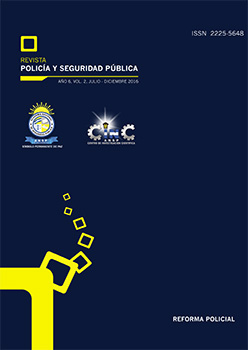Police: models, strategies and reforms. From the government police to the plural security
DOI:
https://doi.org/10.5377/rpsp.v6i2.3003Keywords:
Police, security, state, citizens, government, social control, security actorsAbstract
The great changes experienced by the different societies since the twentieth century have forced the police to reform both their structures and their functions, originally intended for the incipient industrial societies of the nineteenth century. The need for a technical and professional knowledge that distanced it from political power and allowed them to know and combat crime,as well as a greater relationship with the citizens legitimizing their power, have been key elements of these reforms, as well as the adoption of strategies to improve their efficiency. In spite of all these efforts, the complexity and mobility of today’s societies, which, on the one hand, increase risk areas and, on the other hand, overflow the capacity of the State, have demanded the staging of other complementary but Increasing importance: auxiliary bodies, private security and citizens. There is missing yet, however, an efficient supra-state actor capable of preserving citizen guarantees, as is the case at the state level (in democratic states).
Downloads
Download data is not yet available.
Abstract
2459
2459
PDF (Español (España)) 8833
Downloads
Published
2016-12-13
How to Cite
Guillén Lasierra, F. (2016). Police: models, strategies and reforms. From the government police to the plural security. Police and Public Security Journal, 6(2), 205–234. https://doi.org/10.5377/rpsp.v6i2.3003
Issue
Section
Academic Articles
License
Copyright on any research article is transferred in full to Revista Policía y Seguridad Pública upon publication in the journal. The copyright transfer includes the right to reproduce and distribute the article in any form of reproduction (printing, electronic media or any other form).

